Unlocking Inner Harmony: The Power of Chakra Meditation
Namaste,
Chakra Meditation is a transformative practice that delves into the ancient energy centers within the body, known as chakras, to foster balance and vitality. Through Chakra Meditation, practitioners embark on an inner journey, exploring the seven main energy points along the spine, each corresponding to different aspects of physical, emotional, and spiritual well-being. By focusing on Chakra Meditation, individuals can tap into these energy centers, clearing blockages and restoring harmony, thus facilitating a free flow of energy throughout the body. This form of meditation encourages introspection, mindfulness, and an awareness of the subtle energies within. By aligning the chakras through Chakra Meditation, practitioners seek to find equilibrium, rejuvenation, and a deeper connection to themselves and the world around them.
Unlock inner harmony and experience profound well-being through transformative chakra meditation. Discover techniques to balance your energy centers, enhance vitality, and cultivate self-awareness. Embark on a journey of self-discovery and embrace inner peace.
 |
| Chakra Meditation |
Introduction
Hey there! In the hustle and bustle of our modern lives, finding a sense of inner balance and harmony can feel like an elusive dream. We're constantly juggling responsibilities, racing against the clock, and battling stress and anxiety. But what if I told you there's a powerful practice that can help you tap into your inner calm and restore that much-needed equilibrium? Enter chakra meditation – a fascinating and transformative journey that allows you to align and balance your energy centers, bringing you closer to a state of overall well-being.
You might be wondering, what exactly are these mysterious chakras? Well, imagine them as swirling wheels of energy within your body. These energy centers, rooted in ancient traditions, are believed to play a vital role in regulating our physical, emotional, and spiritual health. Each chakra is associated with specific qualities and areas of our being, and when they're in perfect harmony, it's like experiencing a symphony of bliss.
Chakra meditation provides a pathway to unlock and nurture the energy within these centers. By engaging in this practice, you embark on a journey of self-discovery and inner transformation. So, get ready to dive deep into the world of chakras and unlock the secret to finding balance and harmony amidst the chaos of everyday life. Let's explore the wonders of chakra meditation together!
What are Chakras
So, what exactly are these fascinating chakras? Picture them as energetic powerhouses within your body, spinning like wheels and radiating their unique vibrations. There are seven main chakras that form the core of the chakra system, each with its own special characteristics and role to play in our well-being.
Located at the base of the spine, the root chakra is associated with the color red and the element of earth. It grounds us to the present moment and fosters a sense of stability and security. This chakra is all about our connection to the physical world and our basic survival instincts.
The sacral chakra resides in the lower abdomen and is represented by the color orange. Its element is water, symbolizing flow and creativity. This chakra governs our emotions, passion, sensuality, and joy. It helps us embrace our creative energy and navigate our relationships with openness and vitality.
Located in the upper abdomen, the solar plexus chakra shines with a vibrant yellow hue. It is associated with the element of fire, representing transformation and personal power. This chakra influences our self-esteem, confidence, and ability to take action. It empowers us to embrace our authentic selves and stand tall in the face of challenges.
As the name suggests, the heart chakra resides in the center of the chest, radiating a soothing green color. It is connected to the element of air, symbolizing love, compassion, and harmony. This chakra governs our ability to give and receive love, fostering emotional healing, forgiveness, and deep connections with others.
Situated in the throat area, the throat chakra emanates a calming blue color. Its element is sound, representing self-expression and communication. This chakra enables us to speak our truth, express ourselves authentically, and listen attentively. It promotes effective communication and the alignment of our thoughts, words, and actions.
The third eye chakra resides in the space between the eyebrows, shining with an indigo hue. It is associated with the element of light and represents intuition, insight, and inner wisdom. This chakra enhances our ability to tap into our inner guidance, expand our consciousness, and trust our inner knowing.
At the crown of the head, the crown chakra glows with a majestic violet or white color. Its element is pure consciousness and divine connection. This chakra represents spiritual enlightenment, unity, and our connection to the higher realms. It opens the gateway to cosmic wisdom and allows us to transcend the limitations of the physical world.
These chakras are not just colorful spinning wheels; they play a crucial role in regulating various aspects of our physical, emotional, and spiritual well-being. When our chakras are balanced and flowing harmoniously, we experience a sense of vitality, inner peace, and alignment with our true selves. So, let's delve deeper into the magic of chakra meditation and explore how it can bring about a remarkable transformation in our lives.
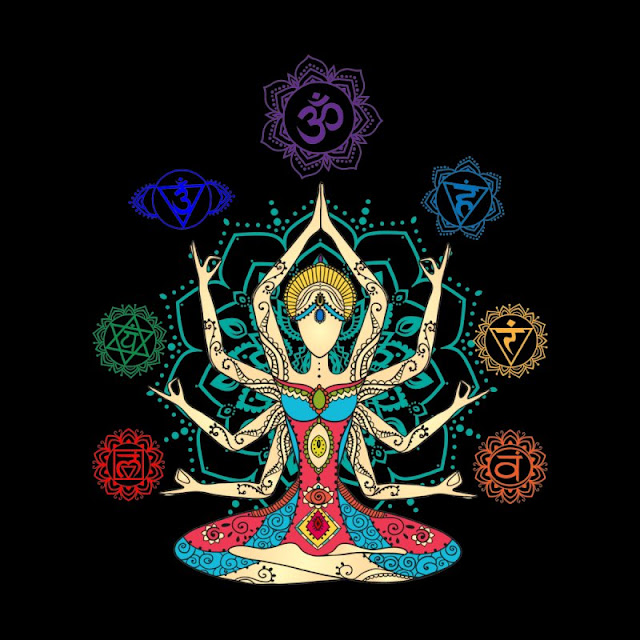 |
| Chakras |
Understanding Chakra Meditation
Now that we have a grasp of what chakras are, let's dive into the transformative practice of chakra meditation. Chakra meditation is a focused and intentional approach to balance and activate the energy centers within us. By engaging in this practice, we seek to bring our chakras into harmony, allowing the energy to flow freely and unblock any stagnation or imbalance.
One of the incredible benefits of chakra meditation is improved energy flow throughout our entire being. When our chakras are balanced, the vital life force energy, known as prana, can move smoothly and effortlessly, nourishing our physical body, emotions, and spirit. This renewed energy flow can revitalize us, boost our vitality, and enhance our overall sense of well-being.
Chakra meditation is not limited to the physical realm; it extends into the emotional and spiritual realms as well. As we work with our chakras, we may experience emotional healing and release. Deep-seated emotional blockages and traumas can be gently acknowledged and released, allowing us to find inner peace, healing, and a greater sense of emotional balance.
Moreover, chakra meditation can be a profound journey of self-awareness and self-discovery. As we explore each chakra, we gain insight into different aspects of ourselves and our lives. This increased self-awareness allows us to recognize patterns, beliefs, and behaviors that may be holding us back or preventing us from reaching our full potential. Through this understanding, we can make conscious choices and embrace personal growth.
Balanced chakras are intrinsically linked to our overall health and well-being. When our energy centers are in harmony, it positively influences various aspects of our lives. Physically, balanced chakras support the optimal functioning of our organs, glands, and bodily systems. Emotionally, they help us manage and regulate our emotions effectively. Spiritually, they facilitate a deeper connection to our higher selves and the divine.
It's important to note that chakra meditation is not a one-time fix; it's a practice that unfolds over time. Regular engagement with chakra meditation cultivates a deeper understanding of ourselves, encourages personal growth, and supports ongoing balance and harmony within our chakra system.
So, if you're ready to embark on a transformative journey of self-discovery, emotional healing, and improved well-being, chakra meditation offers a pathway to explore the immense potential within you. Let's continue our exploration and delve into the techniques and practices of chakra meditation in the next section.
How to Practice Chakra Meditation
Are you ready to dive into the practice of chakra meditation? Let's explore different techniques that can help you balance and activate your chakras. There are various approaches to chakra meditation, and you can choose the one that resonates with you the most. Here are three popular techniques: visualization, breathing exercises, and mantras.
Visualization involves creating vivid mental images to connect with and balance your chakras. Close your eyes and imagine each chakra as a spinning wheel of light. Start from the root chakra and move upwards, visualizing each chakra's specific color and location. Imagine the energy flowing smoothly through each chakra, clearing any blockages and bringing them into perfect balance.
Breathing exercises are an excellent way to synchronize your breath with the energy flow of the chakras. Find a comfortable position and take slow, deep breaths. As you inhale, imagine the breath traveling up from the base of your spine to the crown of your head, activating and energizing each chakra along the way. As you exhale, visualize any stagnant energy or negativity being released from your body, leaving you feeling refreshed and balanced.
Mantras are sacred sounds or phrases that can help focus your mind and resonate with the energy of each chakra. Choose a mantra associated with each chakra or use a general one like "Om" or "So Hum." Repeat the chosen mantra aloud or silently, focusing your attention on the corresponding chakra. Feel the vibration and energy of the mantra resonating within you, bringing harmony and balance to your chakra system.
Now, let's go through a basic chakra meditation session:
- Find a quiet and comfortable space where you won't be disturbed.
- Sit in a relaxed position, either cross-legged on the floor or in a chair with your feet firmly planted on the ground.
- Close your eyes and take a few deep breaths to center yourself.
- Set your intention for the meditation, whether it's to balance your chakras, find inner peace, or promote healing.
- Begin by focusing on your breath, allowing it to become steady and natural.
- Start at the root chakra and visualize a vibrant red spinning wheel of light at the base of your spine.
- Move your attention upward, one chakra at a time, visualizing their respective colors and locations.
- Spend a few moments with each chakra, sensing its energy, and affirming its qualities.
- If your mind wanders, gently bring your focus back to the chakra you're working on.
- Once you reach the crown chakra, imagine a beam of light connecting you to the universe, infusing you with divine energy.
- Take a few more deep breaths, gradually bringing your awareness back to the present moment, when you're ready, slowly open your eyes.
For beginners, here are a few tips to enhance your chakra meditation practice:
- Find a quiet space where you can practice without distractions.
- Create a comfortable meditation environment with soft lighting, cushions, or a supportive chair.
- Experiment with different meditation positions to find what feels best for you.
- Set aside dedicated time for your practice, even if it's just a few minutes each day.
- Start with focusing on one chakra at a time until you feel more comfortable exploring all seven.
- Keep a journal to track your experiences and insights during your chakra meditation journey.
Chakra meditation is a personal practice, and there's no right or wrong way to do it. Trust your intuition and allow yourself to explore and connect with the energy within you. Let's continue our exploration of chakra meditation and delve deeper into the specific techniques for balancing each chakra.
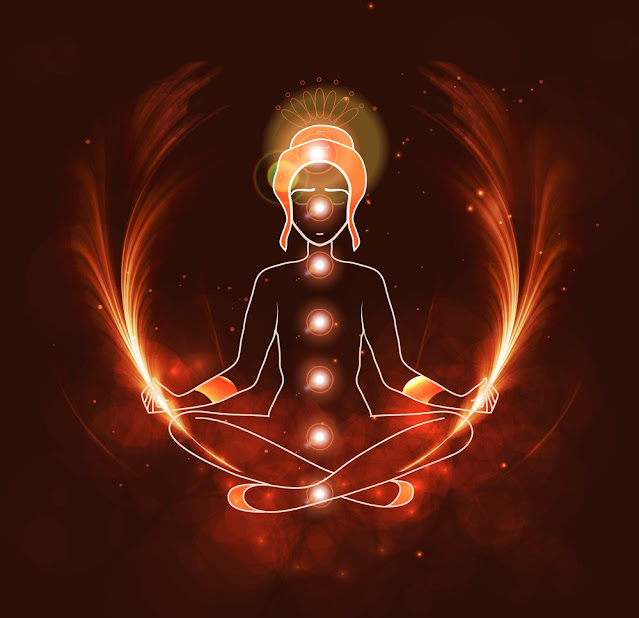 |
| Aura-and-Chakra-Meditation |
Scientific Studies about Chakra meditation
Chakra meditation is a form of meditation that focuses on the seven chakras, or energy centers, in the body. Here are some of the benefits of chakra meditation, supported by scientific studies:
- Reduces stress: Chakra meditation can help reduce stress and anxiety ↂ.
- Improves mental health: Chakra meditation can help improve mental health by reducing symptoms of depression and anxiety ↂ.
- Promotes relaxation: Chakra meditation can help promote relaxation and improve sleep quality ↂ.
- Improves physical health: Chakra meditation can help improve physical health by reducing pain and inflammation ↂ.
- Enhances spiritual well-being: Chakra meditation can help enhance spiritual well-being by promoting feelings of inner peace and harmony ↂ.
Balancing the Chakras
Balancing the chakras is essential for achieving optimal well-being and experiencing a harmonious life. When our chakras are in balance, the energy flows smoothly, allowing us to feel vibrant, grounded, and connected. Let's explore why balancing the chakras is crucial and how imbalances can manifest in different areas of our lives. We'll also delve into techniques and exercises to balance each chakra individually, emphasizing their qualities and associated colors.
Importance of Balancing the Chakras:
Balancing the chakras promotes holistic well-being on physical, emotional, and spiritual levels. When the chakras are balanced, energy flows freely, supporting the optimal functioning of our body, mind, and spirit. It enhances vitality, clarity, and a sense of inner peace. Balanced chakras also facilitate emotional stability, self-expression, and the ability to cultivate meaningful relationships. Furthermore, they deepen our spiritual connection, intuition, and higher consciousness.
Imbalances and Manifestations:
Imbalances in specific chakras can manifest in different aspects of our lives. Here are some examples:
- Root Chakra (Muladhara) Imbalance: Imbalances in the root chakra may result in feelings of insecurity, fear, and instability. It can manifest as financial struggles, lack of focus or grounding, and a disconnection from the physical body.
- Sacral Chakra (Svadhisthana) Imbalance: An imbalanced sacral chakra can lead to difficulties with emotions, creativity, and intimacy. It may manifest as a lack of passion, creative blocks, emotional instability, or challenges in forming and maintaining relationships.
- Solar Plexus Chakra (Manipura) Imbalance: When the solar plexus chakra is imbalanced, it can result in low self-esteem, lack of confidence, and difficulty asserting oneself. It may manifest as feelings of powerlessness, indecisiveness, or digestive issues.
- Heart Chakra (Anahata) Imbalance: Imbalances in the heart chakra can manifest as difficulties in giving and receiving love, emotional pain, and a sense of isolation. It may lead to relationship issues, a guarded heart, or feelings of loneliness.
- Throat Chakra (Vishuddha) Imbalance: An imbalanced throat chakra can hinder communication and self-expression. It may manifest as difficulty expressing thoughts, fear of speaking up, or a lack of clarity in communication.
- Third Eye Chakra (Ajna) Imbalance: Imbalances in the third eye chakra can affect intuition, insight, and clarity of perception. It may manifest as difficulty trusting one's intuition, lack of vision or imagination, or feeling disconnected from one's purpose.
- Crown Chakra (Sahasrara) Imbalance: When the crown chakra is imbalanced, it can result in a sense of disconnection from spirituality and higher consciousness. It may manifest as a lack of inspiration, spiritual confusion, or a feeling of being ungrounded.
Techniques for Balancing Each Chakra:
To balance each chakra, specific techniques and exercises can be employed. Here are some practices focusing on the qualities and associated colors of each chakra:
- Root Chakra: Engage in grounding activities such as walking barefoot in nature, practicing yoga poses like Tree Pose, or using red crystals like garnet or red jasper for meditation.
- Sacral Chakra: Explore creative outlets such as painting, dancing, or playing an instrument. Incorporate the color orange into your surroundings, wear orange clothing, or use crystals like carnelian or orange calcite.
- Solar Plexus Chakra: Practice core-strengthening exercises, engage in activities that boost self-confidence, and visualize a bright yellow light radiating from your solar plexus. Use crystals like citrine or yellow tiger's eye.
- Heart Chakra: Practice heart-opening yoga poses, cultivate self-love through affirmations, and engage in acts of kindness and compassion. Surround yourself with the color green and use crystals like rose quartz or green aventurine.
- Throat Chakra: Engage in throat-opening exercises like chanting or singing, express yourself through writing or speaking, and surround yourself with the color blue. Crystals like blue lace agate or aquamarine can be beneficial.
- Third Eye Chakra: Practice meditation and visualization exercises, keep a dream journal, and surround yourself with the color indigo. Use crystals like amethyst or lapis lazuli for third eye chakra meditation.
- Crown Chakra: Engage in meditation and mindfulness practices, spend time in contemplation or prayer, and surround yourself with the color violet or white. Crystals like clear quartz or amethyst can assist in crown chakra alignment.
These techniques are just starting points, and you can explore various practices that resonate with you. By incorporating these exercises into your routine and working with each chakra individually, you can gradually restore balance and experience the transformative power of chakra meditation.
Integrating Chakra Meditation into Daily Life
Chakra meditation is not just limited to formal practice sessions; it can be seamlessly integrated into your daily routine to support chakra balance and overall well-being. Here are some suggestions on how you can incorporate chakra meditation into your daily life, as well as additional ways to support chakra balance outside of formal meditation:
- Morning Intention Setting: Begin your day by setting an intention for chakra balance and alignment. Take a few moments to visualize each chakra radiating with its respective color and qualities. Set a positive intention for each chakra, such as "I am grounded and secure" for the root chakra or "I speak my truth with confidence" for the throat chakra.
- Mindful Movement: Engage in mindful movement practices that support chakra balance. Yoga, Tai Chi, Qi Gong, or any other form of gentle exercise can help to harmonize the flow of energy in your body and activate the chakras. As you move, bring your awareness to each chakra, envisioning them opening and aligning.
- Affirmations: Incorporate affirmations into your daily routine to reinforce positive beliefs and balance each chakra. Create affirmations that resonate with each chakra's qualities and repeat them throughout the day. For example, for the heart chakra, you can affirm, "I am open to giving and receiving love unconditionally."
- Essential Oils and Crystals: Explore the use of essential oils and crystals to support chakra balance. Choose essential oils that correspond to each chakra, such as lavender for the crown chakra or sandalwood for the root chakra. Apply them to your pulse points or use them in a diffuser. Similarly, select crystals that align with each chakra and carry them with you or place them in your living or working spaces.
- Chakra Alignment Breaks: Take short chakra alignment breaks throughout the day. Set a reminder on your phone or computer to pause and tune into your chakras. Close your eyes, take a few deep breaths, and visualize each chakra spinning and radiating with its respective color. This practice can help you recenter and maintain chakra balance amidst daily activities.
- Self-Reflection and Journaling: Set aside time for self-reflection and journaling to deepen your understanding of your chakra system. Take note of any patterns, emotions, or experiences that may be connected to specific chakras. Use this self-reflection as an opportunity for personal growth and healing.
Consistency and self-care are key for maintaining chakra balance. Regularly engage in chakra meditation, mindful practices, and self-reflection to nurture and support your energy centers. Listen to your body and intuition, adjusting your practice as needed. As you cultivate a deeper connection with your chakras, you'll experience increased self-awareness, inner harmony, and a greater sense of well-being.
By integrating chakra meditation into your daily life and embracing additional supportive practices, you'll embark on a transformative journey of self-discovery and empowerment. Enjoy the process and trust in the innate wisdom of your chakra system.
 |
| Self-Realization |
Conclusion
Chakra meditation is a profound practice that offers a multitude of benefits for our physical, emotional, and spiritual well-being. By focusing on balancing and activating our energy centers, we can tap into the transformative potential of chakra meditation and experience profound positive changes in our lives.
Through chakra meditation, we can achieve a harmonious state of being, where our energy flows freely and our chakras are in perfect alignment. This balance and activation of the chakras bring about numerous benefits. We feel a renewed sense of vitality, clarity, and inner peace. Our emotional wounds begin to heal, and we gain a deeper understanding of ourselves and our relationships. Chakra meditation opens the door to enhanced self-awareness, intuition, and spiritual connection. It empowers us to live authentically and to embrace our true potential.
Embarking on a journey of self-discovery through chakra meditation is an invitation to explore the depths of our being. It is an opportunity to cultivate self-love, self-care, and self-transformation. By embracing this practice, we embark on a path of holistic healing, where we can heal our bodies, balance our emotions, and expand our consciousness.
As you dive into the world of chakra meditation, remember that it is a personal journey. Allow yourself to explore different techniques, listen to your intuition, and adapt your practice to suit your needs. Be patient and gentle with yourself, as the process of chakra balancing takes time and consistent effort.
So, I encourage you to embrace chakra meditation as a powerful tool for holistic well-being and inner peace. Take the time to connect with your chakras, nourish them, and allow them to guide you on a transformative journey of self-discovery. As you align and balance your energy centers, you'll witness the positive ripple effects in all areas of your life.
Embrace the beauty and wisdom of your chakra system, and let it be a guiding force in your pursuit of happiness, fulfillment, and spiritual growth. The transformative potential of chakra meditation awaits you. Are you ready to embark on this extraordinary journey?






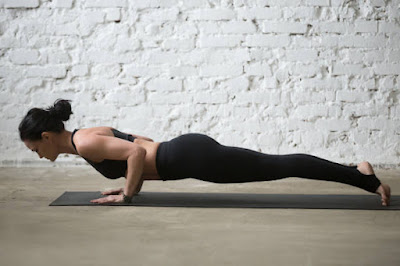


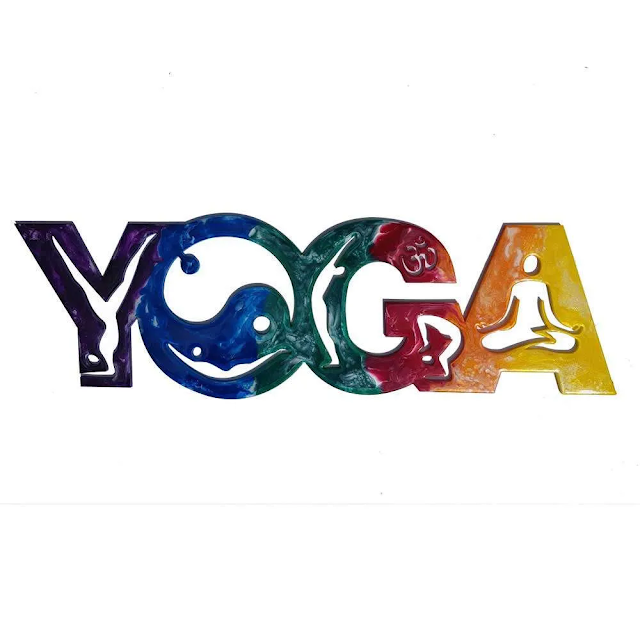

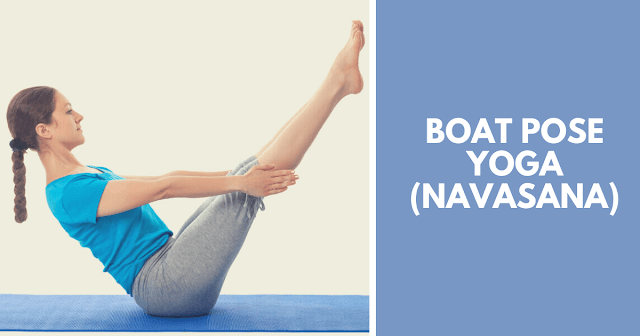



.jpg)


